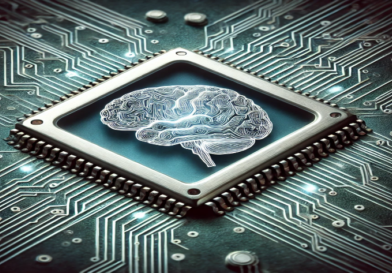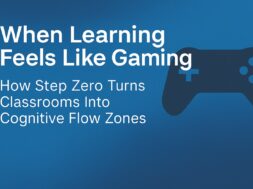The Mothership of All Thinking: Understanding the Brain's Role in Learning
The brain can be seen as the ultimate "Mothership" of all thinking—a vivid, modern metaphor that captures its role as the central hub of cognitive activity. In an educational context, this metaphor helps us grasp the brain’s immense power to process, control, and guide thought. Just as a mothership coordinates and directs the actions of all units under its command, the brain orchestrates the complex and dynamic processes that drive learning, decision-making, and problem-solving.
Click HERE to find more information about the teacher's role as a curator of learners thinking processes.
This analogy emphasizes that the brain is not a passive recipient of information but an active, self-regulating system that constantly manages and integrates data from various sources—sensory inputs, emotions, memories, and logical reasoning. The brain’s sophisticated structure and adaptive nature make it far more than a simple processor; it is a flexible, ever-evolving command center that refines and reconfigures its operations based on experiences and new challenges.
In the classroom, understanding the brain as the "Mothership of thinking" shifts how we approach education. It underscores the need for teaching methods that engage and activate the brain's natural capabilities. Rather than just delivering information, educators can become navigators and engineers of this cognitive mothership, guiding students to harness their mental processing power, encouraging critical and creative thinking, and optimizing how they interact with and absorb information.
This metaphor sets the stage for rethinking education by focusing on how to unlock and maximize the brain's potential. It challenges traditional teaching methods that often overlook the brain’s inherent strengths and adaptability, advocating instead for approaches that tap into the brain’s innate abilities to think, learn, and grow.
Central Processing Unit (CPU) of Learning
Just like a microchip is the central processing unit (CPU) in a computer, the brain is the CPU of learning. It handles the influx of data from sensory experiences, memory, emotions, and logic, making rapid decisions on how to store, process, and act on information. This mirrors the way a microchip processes data in complex computing systems.
Adaptive Processing and Upgrades
Unlike traditional computers, the brain is self-upgrading. It constantly rewires itself through neuroplasticity—learning from new experiences, adapting to challenges, and refining its ability to process information. The brain’s thinking microchip adapts over time, just as modern microchips are continuously updated to process more data more efficiently.
Real-time Decision Making
In a classroom setting, students are constantly processing information and making decisions in real time, much like a microchip processes commands. The thinking microchip (the brain) analyzes inputs (lessons, experiences, sensory information) and determines the most efficient way to approach a problem.
In this analogy, teachers act like software engineers, providing tools and guiding students on how to optimize their mental processing power, rather than just inputting data.
Parallel Processing
Modern microchips handle parallel processing—the ability to process multiple threads of information simultaneously. The brain works similarly. Gen Z and Alpha students often multitask, toggling between various subjects, media, and sensory inputs while processing them in parallel. The thinking microchip allows for this multi-dimensional processing, connecting different areas of thought (emotion, logic, creativity) simultaneously to solve problems.
Memory Storage and Retrieval
Memory in a microchip is finite, but it uses sophisticated algorithms to retrieve and store information efficiently. Similarly, the brain's thinking microchip has an incredible storage system, organizing memory in a way that allows for efficient recall when needed. Educators in your project can curate learning experiences that tap into this natural ability, designing teaching methods that facilitate better memory retrieval and application.
6. Learning as a Cognitive Operating System (OS)
Much like an operating system coordinates hardware and software to run efficiently, the thinking microchip requires a learning OS—the right set of conditions, tools, and thinking strategies to optimize cognitive functioning. In your project, teachers curate this OS by providing thinking tools that guide learners through complex themes, just as software guides a computer through tasks.
Customized Instruction and Cognitive Load Management
Just as a microchip handles tasks based on its specific architecture, the brain’s thinking microchip processes information differently for each individual. Gen Z and Alpha learners, who are digital natives, have a high cognitive load due to their constant exposure to fast information. Teachers act as curators of cognitive load, helping students manage and process the information flow effectively, ensuring their brain’s microchip isn’t overwhelmed.
Neural Networks as Integrated Circuits
In computers, integrated circuits connect different components of the system, enabling complex functions. The brain’s neural networks serve the same purpose, linking different cognitive areas (such as creativity, logic, and emotional processing) to create holistic understanding. Thinking tools in your curriculum activate and strengthen these neural networks, ensuring students can approach problems from multiple angles, much like how integrated circuits in a microchip enhance its overall performance.
Processing Speed and Feedback Loops
A microchip thrives on feedback loops to improve performance, and the brain does the same. In learning environments, constant feedback from peers, teachers, and real-world applications enhances the brain’s processing speed and accuracy. Just as software improves microchip performance, immediate feedback improves cognitive function and decision-making in students, helping them refine their thinking and problem-solving skills.
Cognitive Security and Debugging
In computers, microchips have security systems and debugging tools to fix issues and protect against threats. The brain has its own cognitive security mechanisms, protecting against misinformation, biases, and errors in judgment. Educators can act as debuggers, helping students recognize cognitive biases, flawed logic, or misinformation, thereby ensuring their thinking microchip runs efficiently and securely.
Did you know that the Mothership of all Thinking set t standards for AI. More here.





